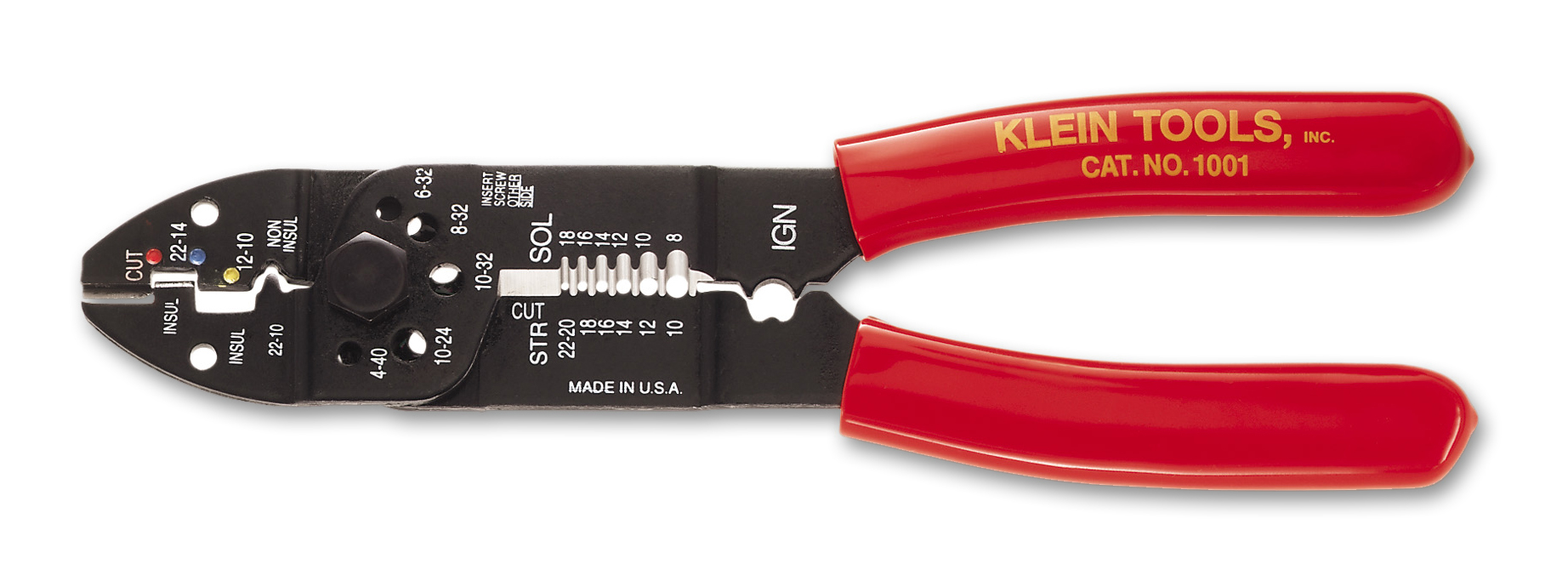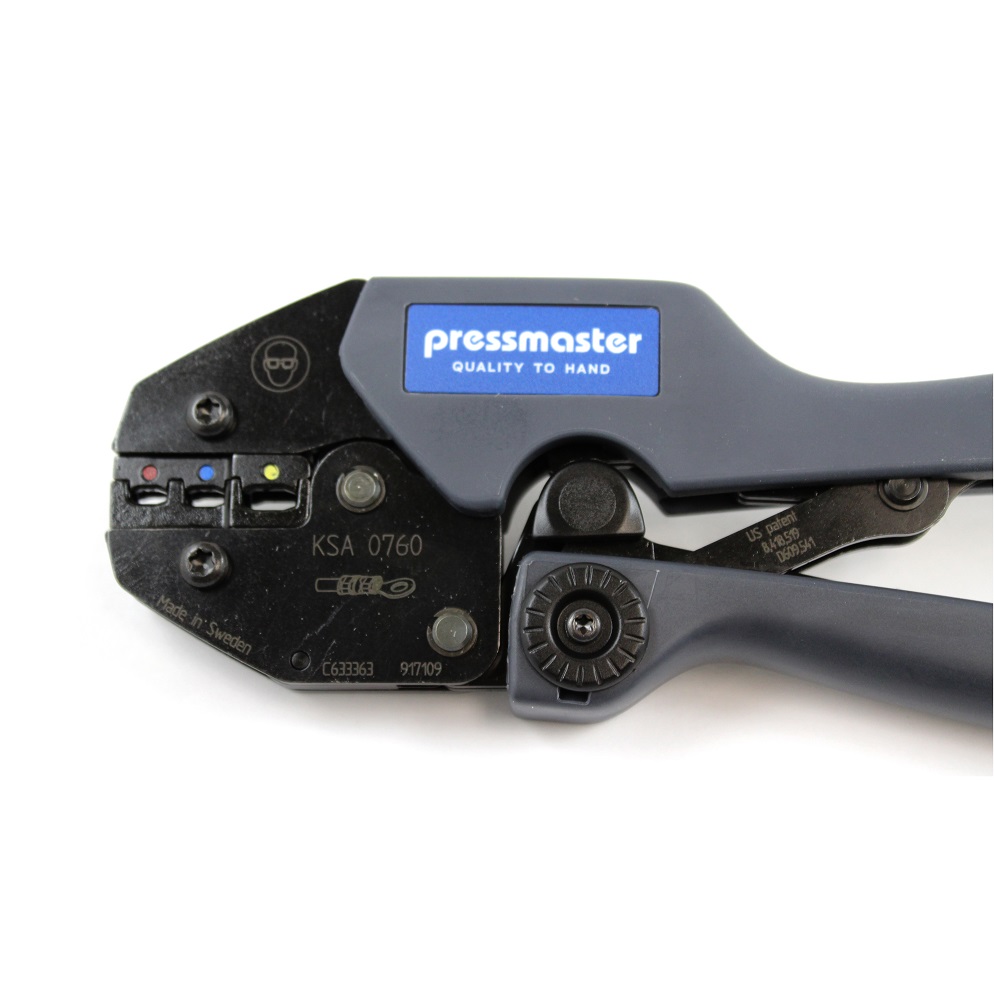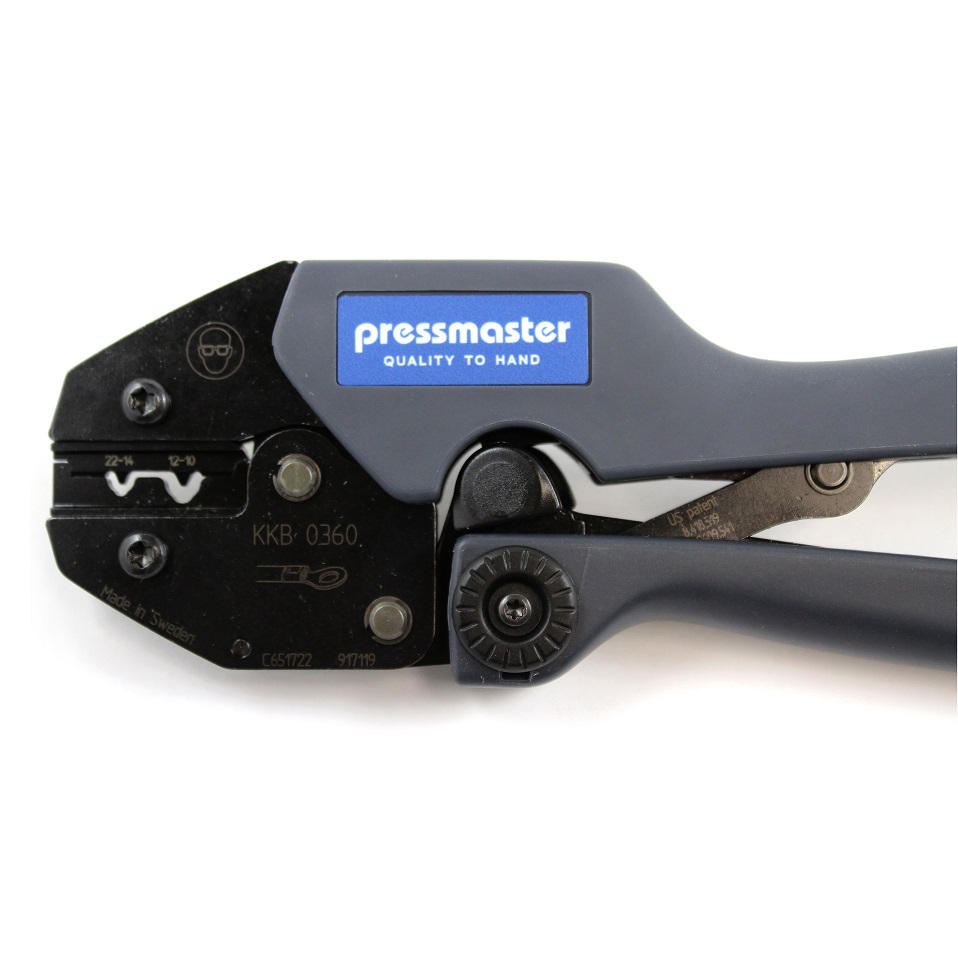How to Choose the Right Crimping Tools
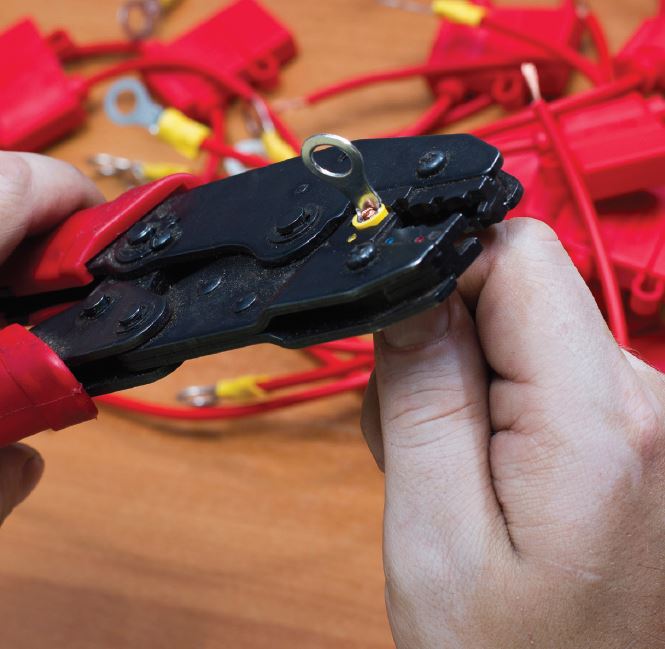
Proper crimping is essential for reliable terminations, and getting the right crimp requires the right tool. While this may sound simple enough, there several important things to keep in mind when selecting from the myriad of crimping tools on the market.
Volume of Operation
The first factor to consider is the volume of your operation. While high-volume operations will generally turn to automatic tooling, such as a hydraulic or pneumatic press, many production lines still utilize hand-crimping.
Standard field-repair quality crimpers are ideal for shops that do lower to medium volumes of crimping and have simpler needs. For shops like this, affordable multi-purpose models with swappable dies, such as the Mobile Crimping Tool Kit from Waytek (crimp tool frame and 7-die set), eliminate the need for multiple hand crimpers.
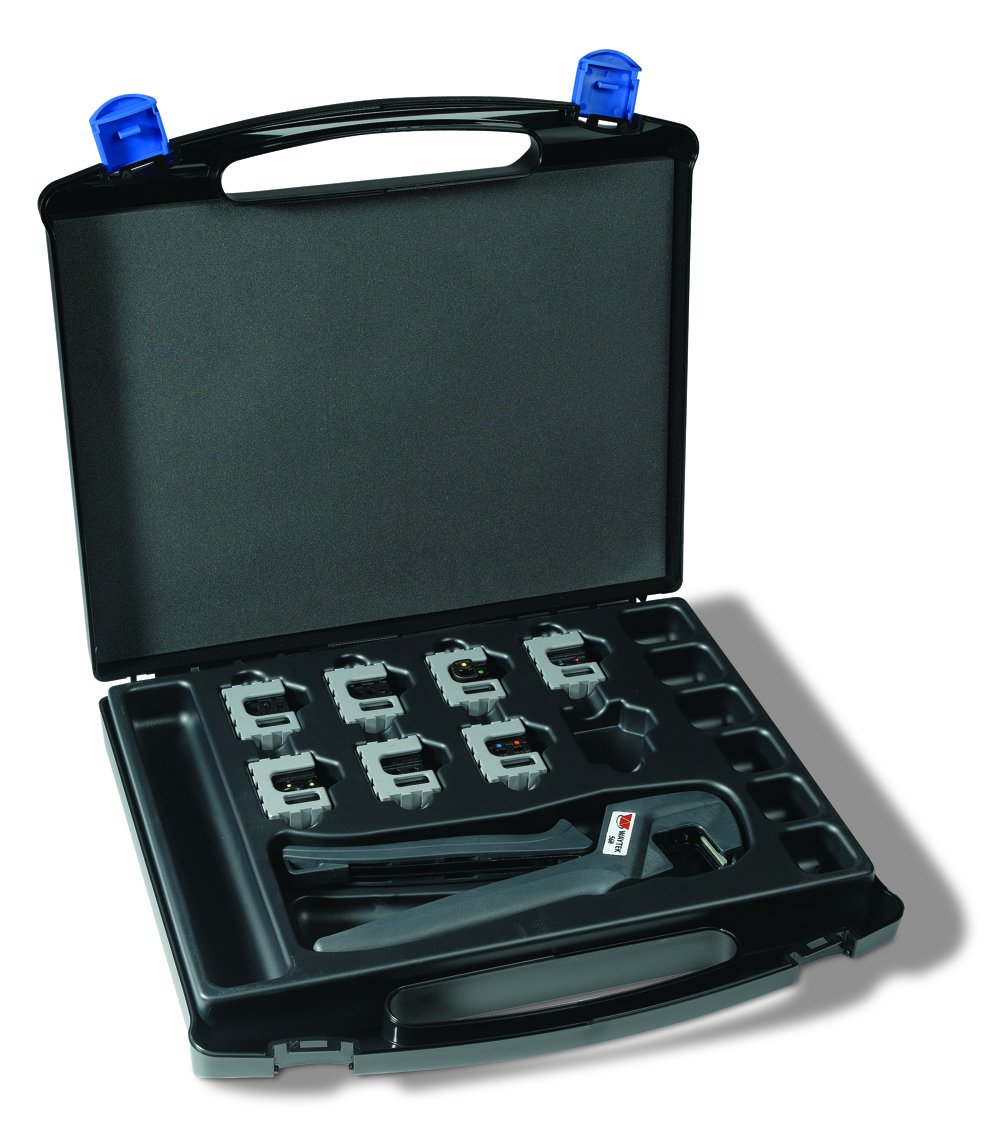 Left: The Mobile Crimping Tool Kit from Waytek. Each die is interchangeable with the tool frame and can be used for specific needs ranging from insulated to non-insulated terminals, heat shrink terminals and industry-standard terminals for multi-pin connectors.
Left: The Mobile Crimping Tool Kit from Waytek. Each die is interchangeable with the tool frame and can be used for specific needs ranging from insulated to non-insulated terminals, heat shrink terminals and industry-standard terminals for multi-pin connectors.
Other good choices for all-in-one crimping tools include the Imperial Multi Purpose Crimper, the Sta-Kon Crimping Pliers with Wire Stripper & Cutter from Thomas & Betts, and the Multi-Purpose Electrician's Tool by Klein Tools. These relatively inexpensive tools work well for in-the-field use and repairs, can be used in confined spaces, and enable wire cutting and stripping as well as crimping of terminals.
Above left: Sta-Kon Crimping Pliers with Wire Stripper & Cutter from Thomas & Betts. Above right: The Multipurpose Electrician’s Tool from Klein Tools.
Companies with medium output will want to seek out models that are more ergonomic and rugged—often with longer handles and ratcheting capabilities for enhanced quality control and ease of use—such as the Premium Grade Crimp Tool from Molex.
Above: The Premium Grade Crimp Tool from Molex features a ratcheting mechanism to ensure even pressure and full range of motion for a proper crimp. Its precision terminal locator holds terminals in the proper crimping position for each of the three nests.
Wire Gauge, Terminal Material and Crimp Profile
Wire gauge is another top consideration. Crimping tools are sized according to the wire gauge they can accept using American Wire Gauge (AWG). Also important is the type of terminal being crimped because each type of terminal has a specific crimp profile.
Insulated or Non-Insulated Terminals
Be sure to pick the right crimper for use with an insulated or a non-insulated terminal. Crimpers for insulated terminals have rounded jaws designed to avoid damaging the terminal insulation. Using an uninsulated crimper on an insulated terminal could damage the insulation sleeve or lead to an under crimp or an over crimp.
Above: Example of a crimper for use with insulated terminals. The rounded jaws are desinged to avoid damage to terminal insulation and ahe color-coded dots to match industry-standard terminal insulation colors.
Above: Example of a crimper for use with non-insulated terminals. The jaws are designed to make a precsie indent into the metal terminals.
Terminals typically come in two main types—open barrel or closed barrel. Closed barrels are the most common type seen in the wire terminal market. They come in insulated and non-insulated varieties, quick connections, and many shapes and sizes. Oval or hexagon stye crimps are typically used for closed terminals.
Right: An example of an insulated, closed barrel terminal from Molex
Open barrel styles, in contrast, provide the best resistance to vibration and corrosion and are commonly used in automotive wire harnesses and high-volume applications. The most common crimp style of an open barrel is an “F” crimp (see chart below).
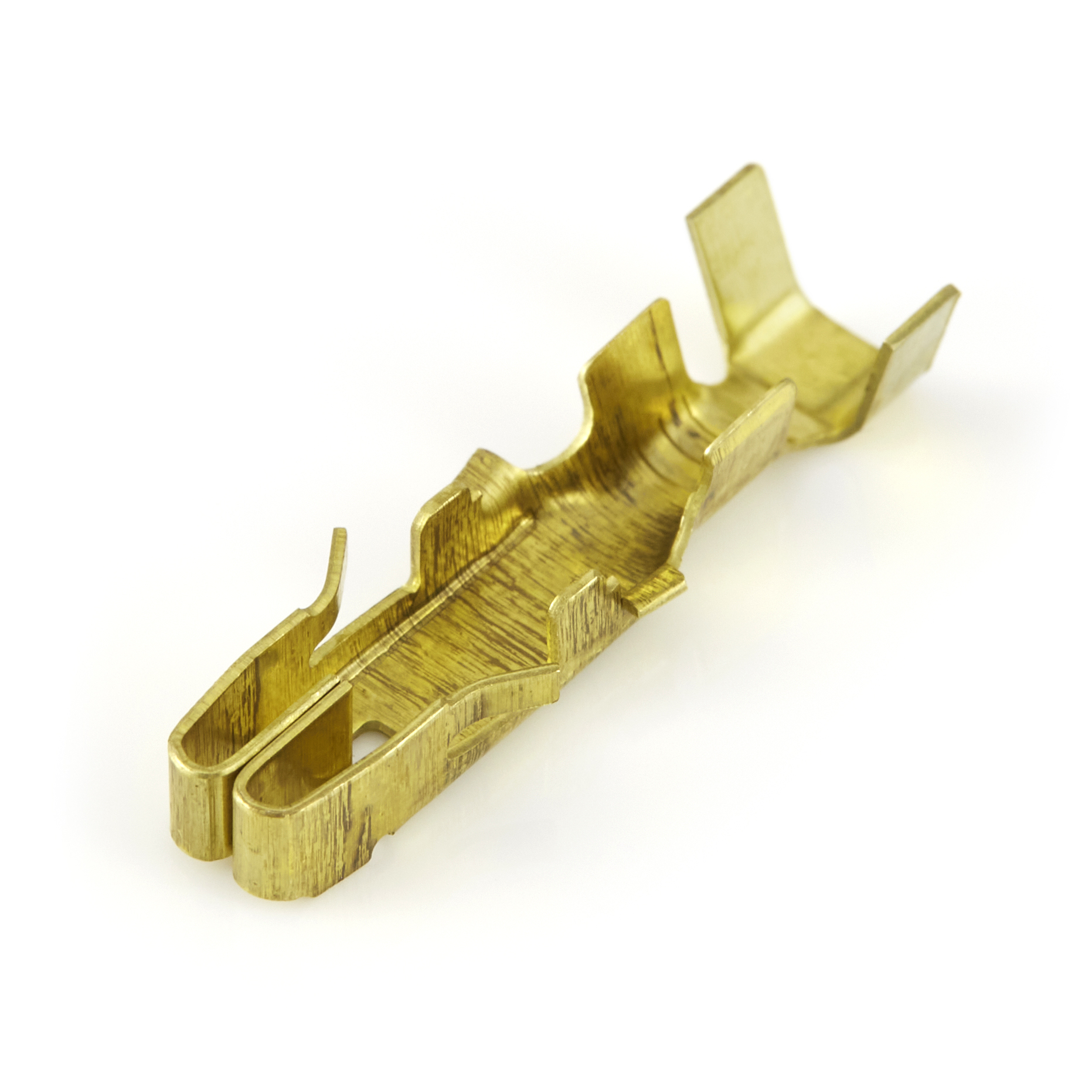 Left: An expample of an open barrel terminal from Aptiv
Left: An expample of an open barrel terminal from Aptiv
Manufacturer Specifications
Most terminal manufacturers specify which crimper needs to be used for each terminals type, so be sure to refer to the manufacturer’s technical specifications. If you must comply with UL or other guidelines, it is especially important to adhere to manufacturer crimp tool specifications. A multipurpose crimper will typically not be acceptable. 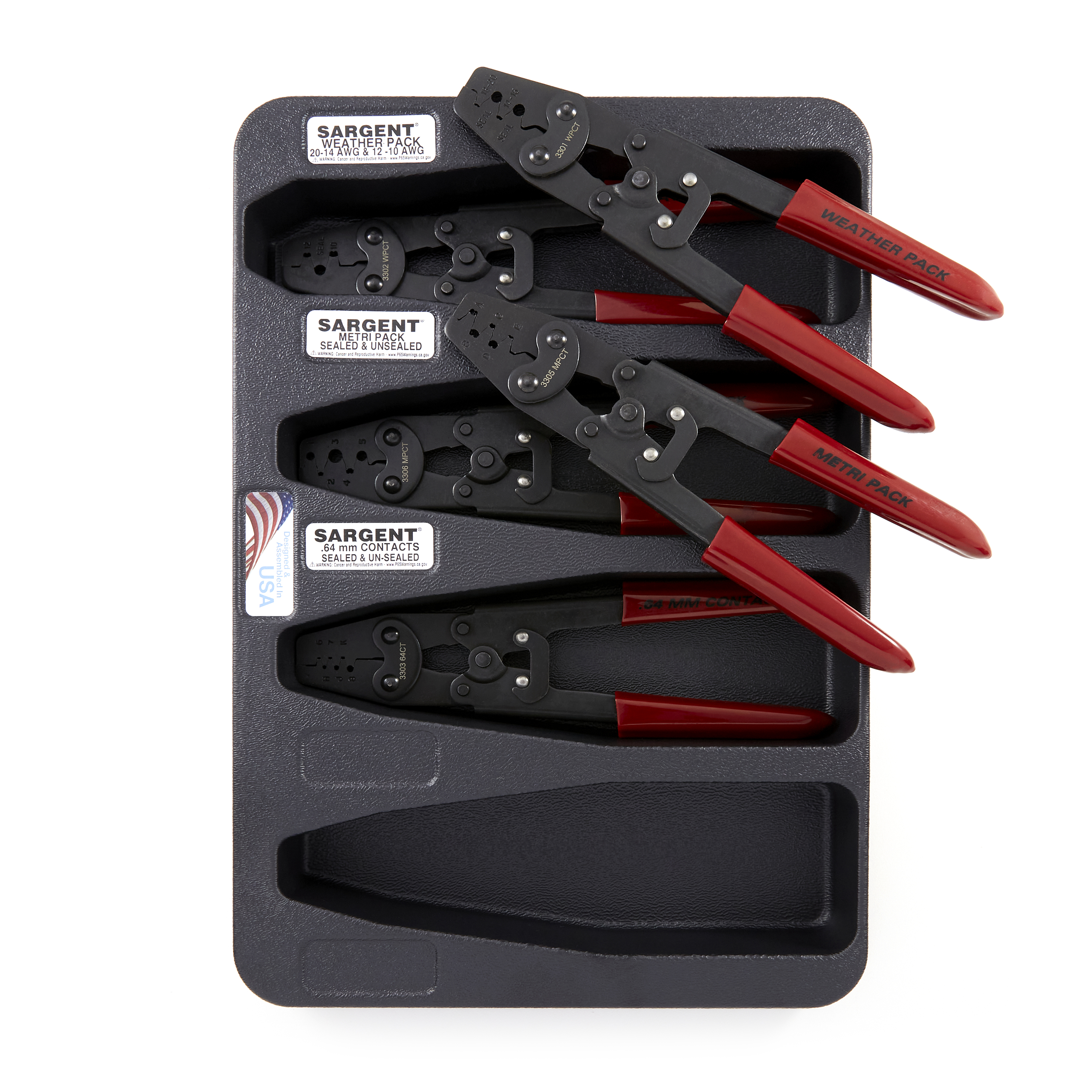
Molex, TE Connectivity, Aptiv, Yazaki, and Amphenol all make terminals that require corresponding crimping tools which are available from manufacturers such as Sargent by Oetiker, Pressmaster, Rennsteig Tools, and Klein Tools.
Shown at right: Sargent tools designed specifically for use with Aptiv Weather-Pack and Metri-Pack terminals.
A Closer Look at Crimp Profiles
Below is a reference chart outlining a few of the most common crimp profiles for different terminal types: A symmetric crimp for insulated terminals, a single indent crimp for non-insulated terminals, an “F” or “B” crimp for open barrel terminals, and a hex or single indent crimp for copper tube terminals.
| Connector | Crimp Profile |
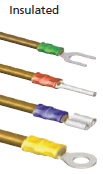 |  |
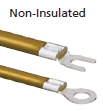 |  |
 |  |
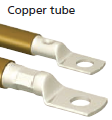 |
|
Inspecting Your Crimp
Molex has provided a comprehensive chart to help you verify if you have made a correct crimp on an open or closed barrel terminal. Click the image below to enlarge. Or order you own poster-size version of this graphic from Waytek while supplies last.
Warranty and Certification Requirements
It is important to check the warranty requirements of your terminal. While many brands will simply list specifications for a crimping tool, some warranties may go so far as to dictate that only their brand of crimper be used with their branded terminal. Failure to abide by these mandates may void your warranty, so it pays to be sure you are following their guidelines.
As mentioned earlier, compliance with manufacturer guidelines is also an important aspect of qualifying for common quality certifications such as UL, SAE or MIL. Be sure to use the manufacturer-specified crimper if you need to maintain such certifications.
To wrap it up, there's a surprising amount of variety in crimping and a good approach is to have a few sets of crimpers handy to perform different jobs. To get the gear you need for your perfect crimp, view our crimping tools and terminals.
RELATED POSTS:
Wire Crimping Techniques & Tools by Molex
Subscribe Now
Subscribe and be the first to know when new articles are published.


